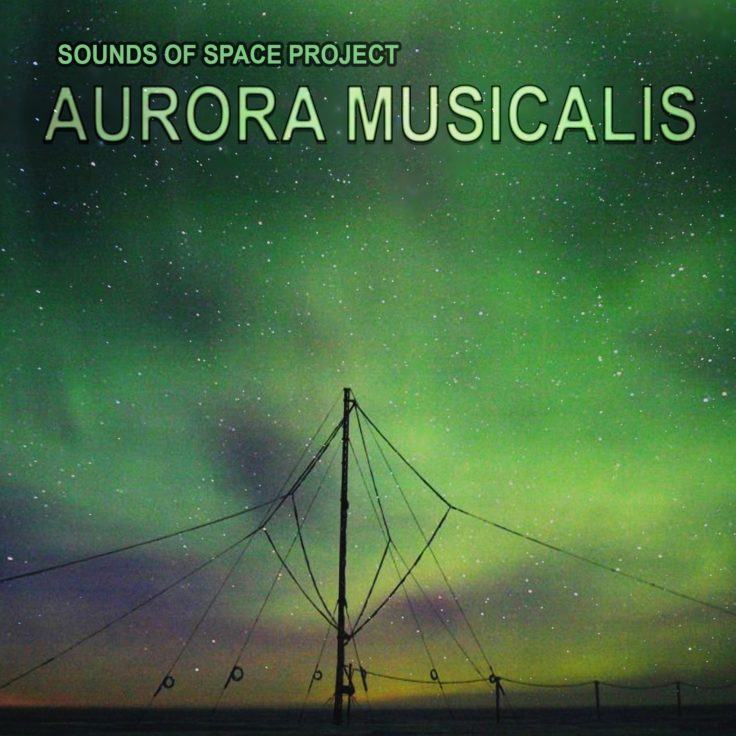A new album with the unique 'sounds of space' recorded from Antarctica is released free today (6 May 2020).
Aurora Musicalis contains the natural radio 'sounds' of our planet, recorded at British Antarctic Survey's Halley VI Research Station in Antarctica. The 'sounds' are accompanied by original piano music by composer Kim Cunio of the Australian National University, with image processing by Cambridge-based artist-engineer Diana Scarborough. The album release is part of the ongoing 'Sounds of Space' project, a collaboration between space weather research scientist Nigel Meredith of British Antarctic Survey, Diana Scarborough, and Kim Cunio. In this time of social isolation, Aurora Musicalis offers the chance to listen deeply to the acoustic ecology of our planet's natural radio emissions from the comfort of our homes.
The Sounds of Space:
The planet naturally produces a variety of radio waves, generated by lightning activity and geomagnetic storms driven by the Sun. These natural radio waves are at the lower end of the radio spectrum in the audio-frequency range, so-called because they have the same frequencies as audible sound waves. BAS uses a Very Low Frequency (VLF) receiver at Halley VI Research Station in Antarctica, to pick up these emissions.
BAS space weather research scientist Dr Nigel Meredith explains:
"We use these waves to investigate the science of space weather storms, to help understand potential space weather impacts on the climate system, and for lightning detection. As a remarkable spin-off, these radio waves can be converted directly into audible sounds, revealing a series of weird and wonderful noises known as the 'sounds of space'."
The unique 'sounds' provide a heightened experience of the life of the planet; including terrestrial sounds like 'spherics', which are pulses from lightning flashes, and those generated further from the planet, such as 'chorus emissions', from electrons entering the magnetosphere during geomagnetic storms, which can resemble the twittering of birds.

The creation of Aurora Musicalis:
From four years of data collected at Halley VI VLF, the Sounds of Space team chose a 24 hour period from the 9 August to 10 August 2012 to explore with music and art. The Aurora Musicalis album presented here is the result of Kim Cunio's playing the piano in another 24 hour period, playing directly to the 'sounds'.
The recording has been cut from the 24 hour day down to the final 90 minutes of sound presented in Aurora Musicalis; with samples of sound, date and time-stamped, and ultimately edited down into 11 tracks so that the listener can experience the changing sounds throughout the course of the day.
Australian National University Head of Music and composer Kim Cunio explains:
"Aurora Musicalis is a statement that science and art can work together, not solely to entertain as such collaborations were imagined generations ago, but to unite us in telling the story of our planet as it struggles under multiple stresses, each of which could change our civilisation within a generation. We must trust our scientists, who by nature are not activists, but truth tellers who usually shy away from political or social conflict over the results of their findings. Music and the arts have a role to play in galvanising us into facilitating the urgent and immediate care that our planet needs."
A bonus track is available on Youtube, featuring Kim Cunio's piano composition, with a selection of Halley VI VLF recordings, selected by Nigel Meredith from 9 August to 10 August 2012. The digital art has been created by Diana Scarborough, including use of material from the BAS image collection:
Artist-engineer Diana Scarborough says:
"This album offers an emotional sanctuary of sound, a mixed palette of data and music bringing beauty that leads to deeper understanding of the earth's natural sounds. Our Sounds of Space projects emerge through a shared process of creative engagement, cross-discipline collaboration and outcomes are always different. We have created films, performances and lectures inspired by space weather but launching an album is a first! Different outcomes provoke an emotional reaction through beauty and immersion, leading to a deeper understanding of the science."
Listen to the 11 tracks of the full 90 minute album, experiencing Kim Cunio's response to the Sounds of Space and Antarctica, wherever you are, here: Aurora Musicalis Album
Get involved:
Have you been inspired by Aurora Musicalis and the Sounds of Space project? Create your own musical or visual response to the raw Halley 'sounds' from Track 13 in Bandcamp and share with us using #SoundsofSpace.
Explore the British Antarctic Survey website to learn more about the ongoing Sounds of Space project.
Acknowledgements:
The team would like to thank the scientists and engineers at BAS who have contributed to the success of the VLF receiver at Halley, including Richard Horne, Mark Clilverd, Neil Cobbett, and Andy Smith. The team would also like to thank Beatrix Schlarb-Ridley, Director of Innovation at BAS, for continued support of the project.
Nigel Meredith would like to acknowledge funding from Natural Environment Research Council Highlight Topic grant NE/P10738X/1 (Rad-Sat), the NERC grant NE/R016038/1. Diana Scarborough would like to thank the School of Music, Australian National University, for their support as a Visiting Fellow and The Artists Information Company (A-N) for her travel bursary. Kim Cunio travelled to Cambridge in 2018 on a Research School for Humanities and the Arts research grant.






